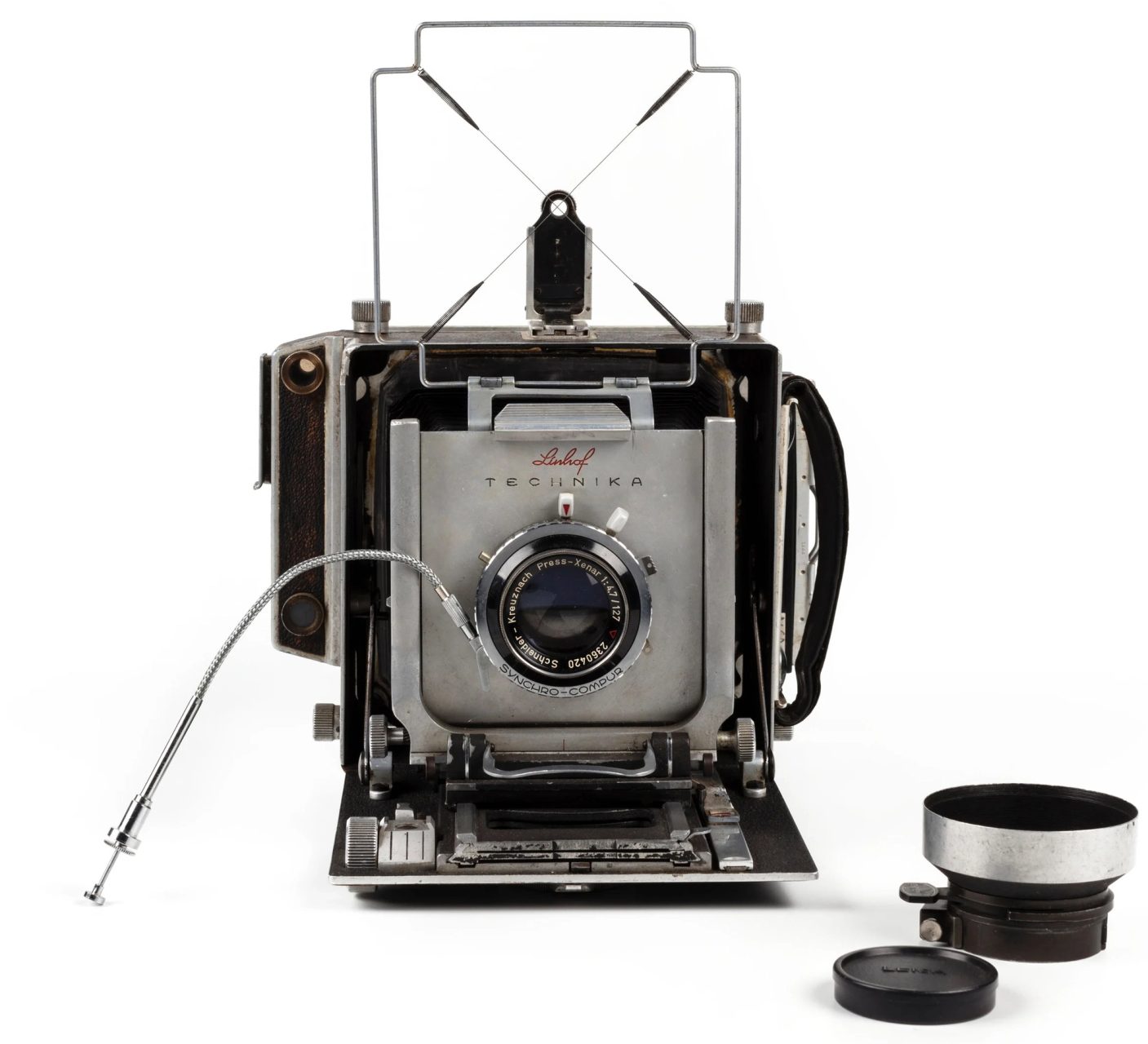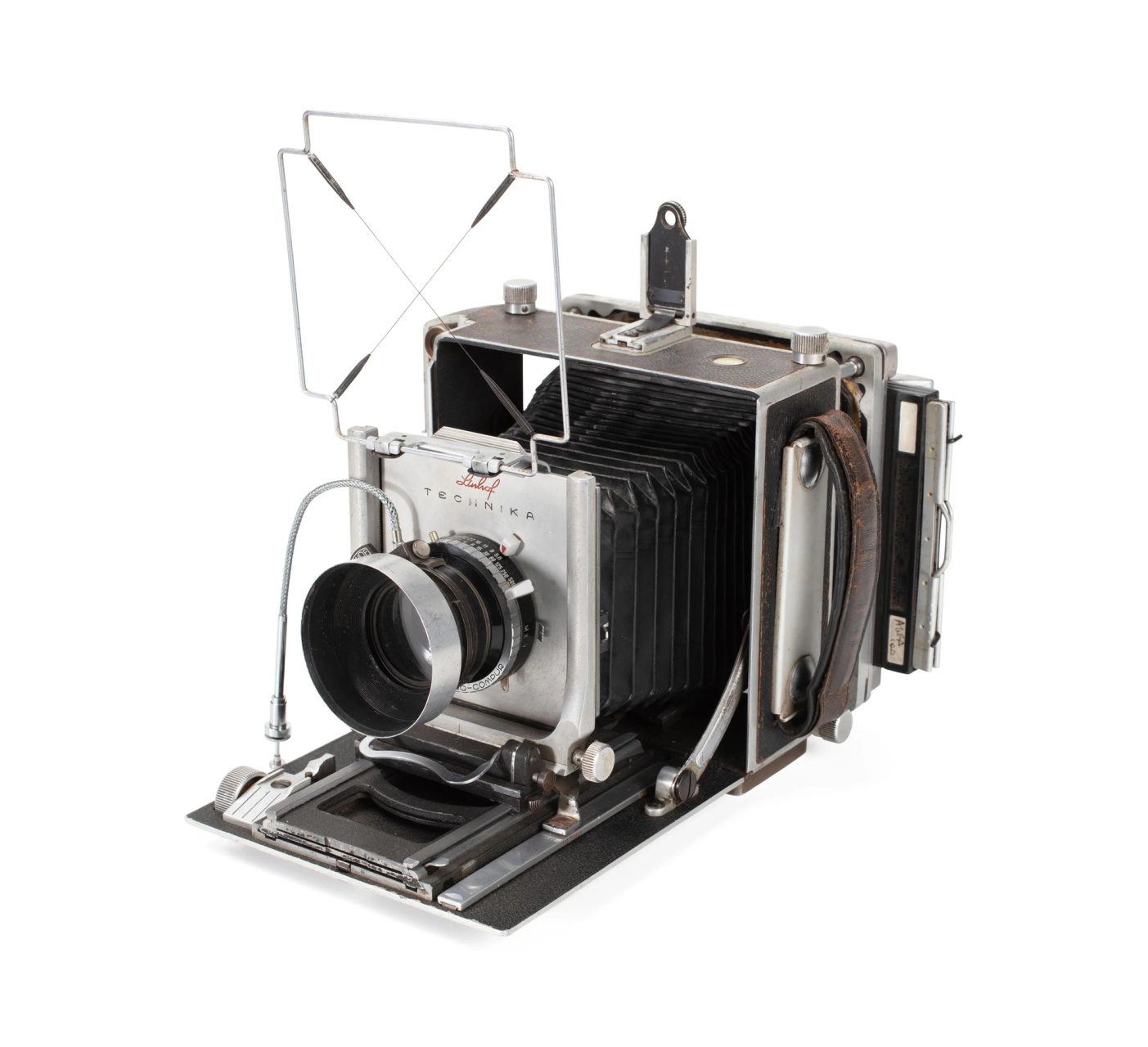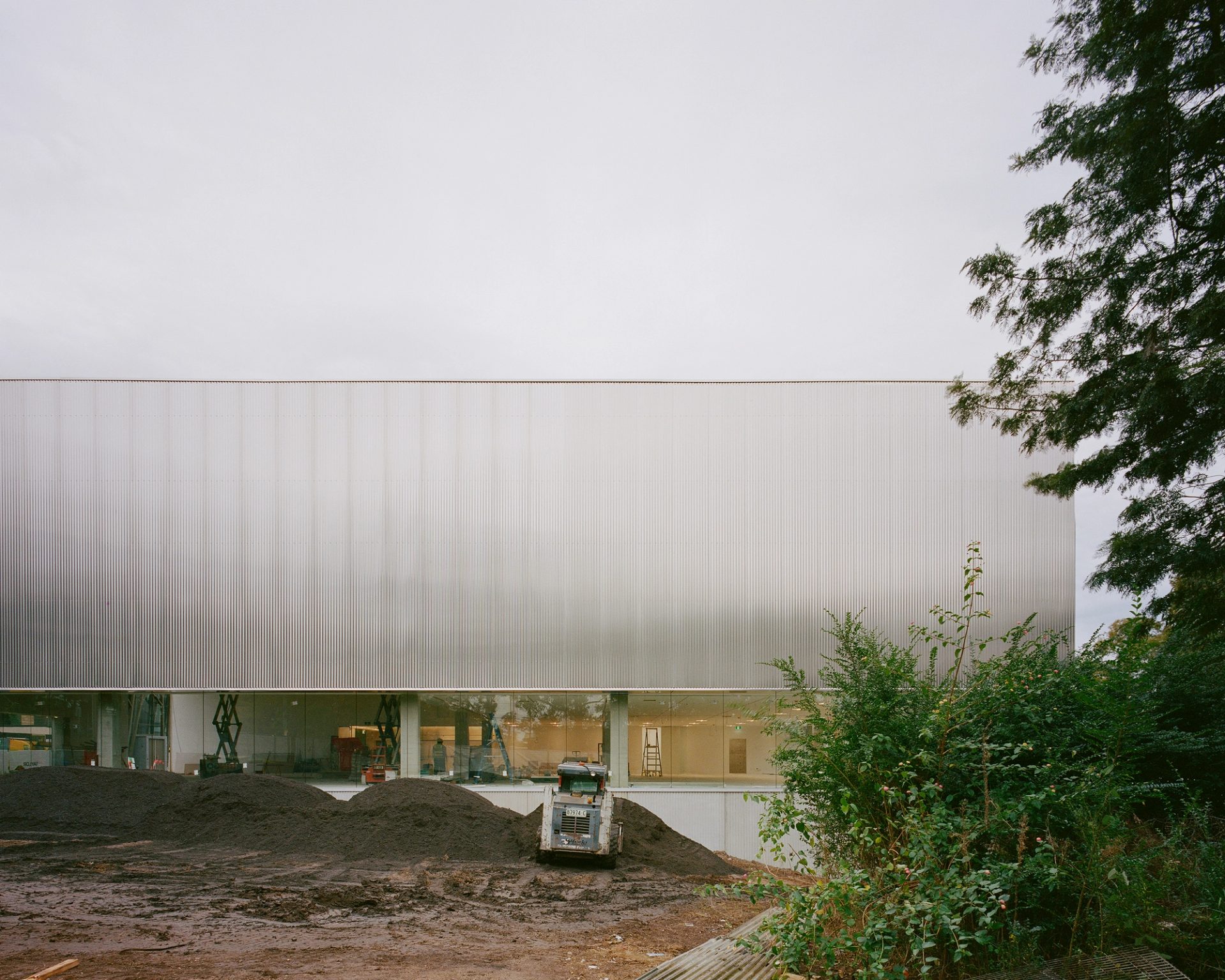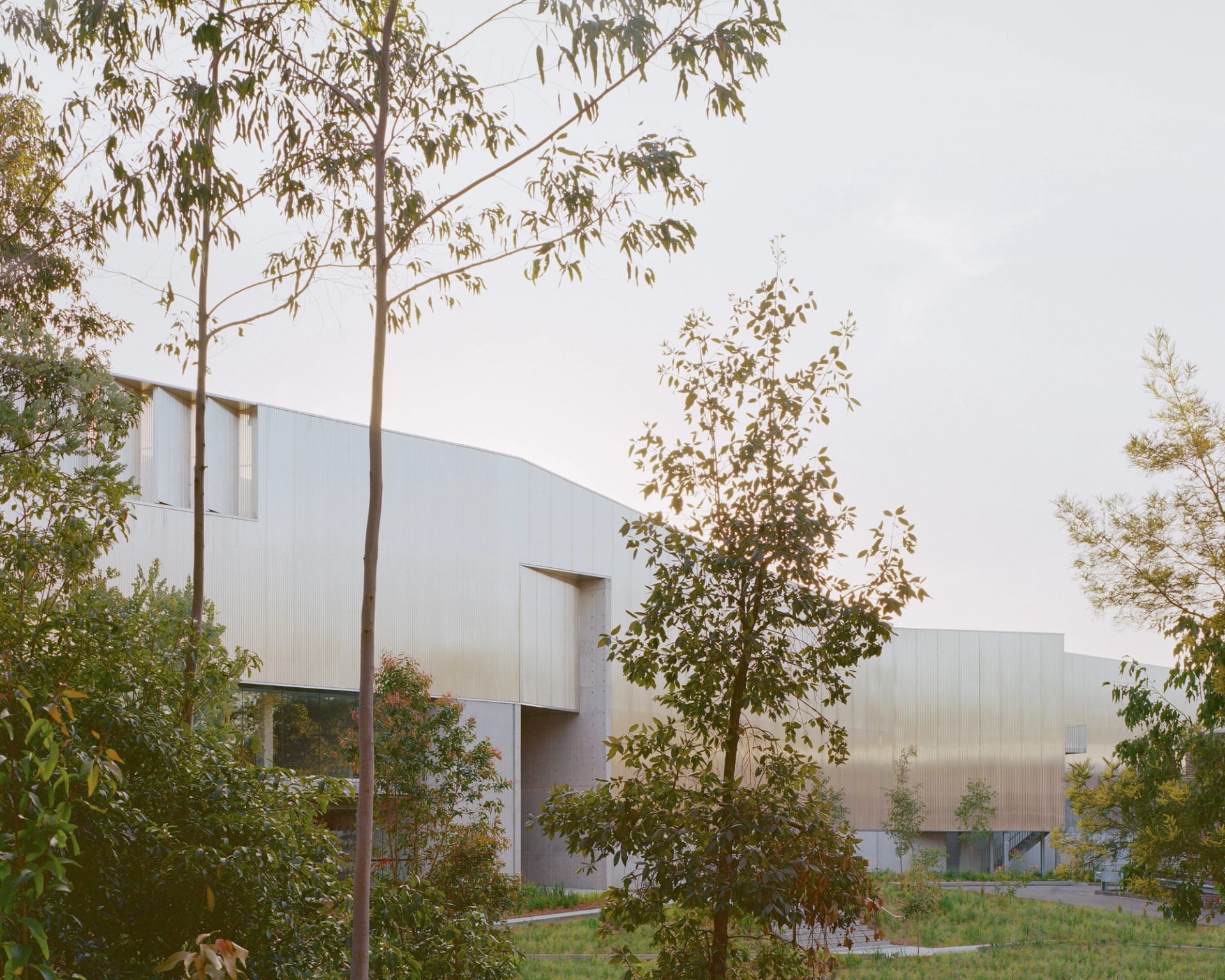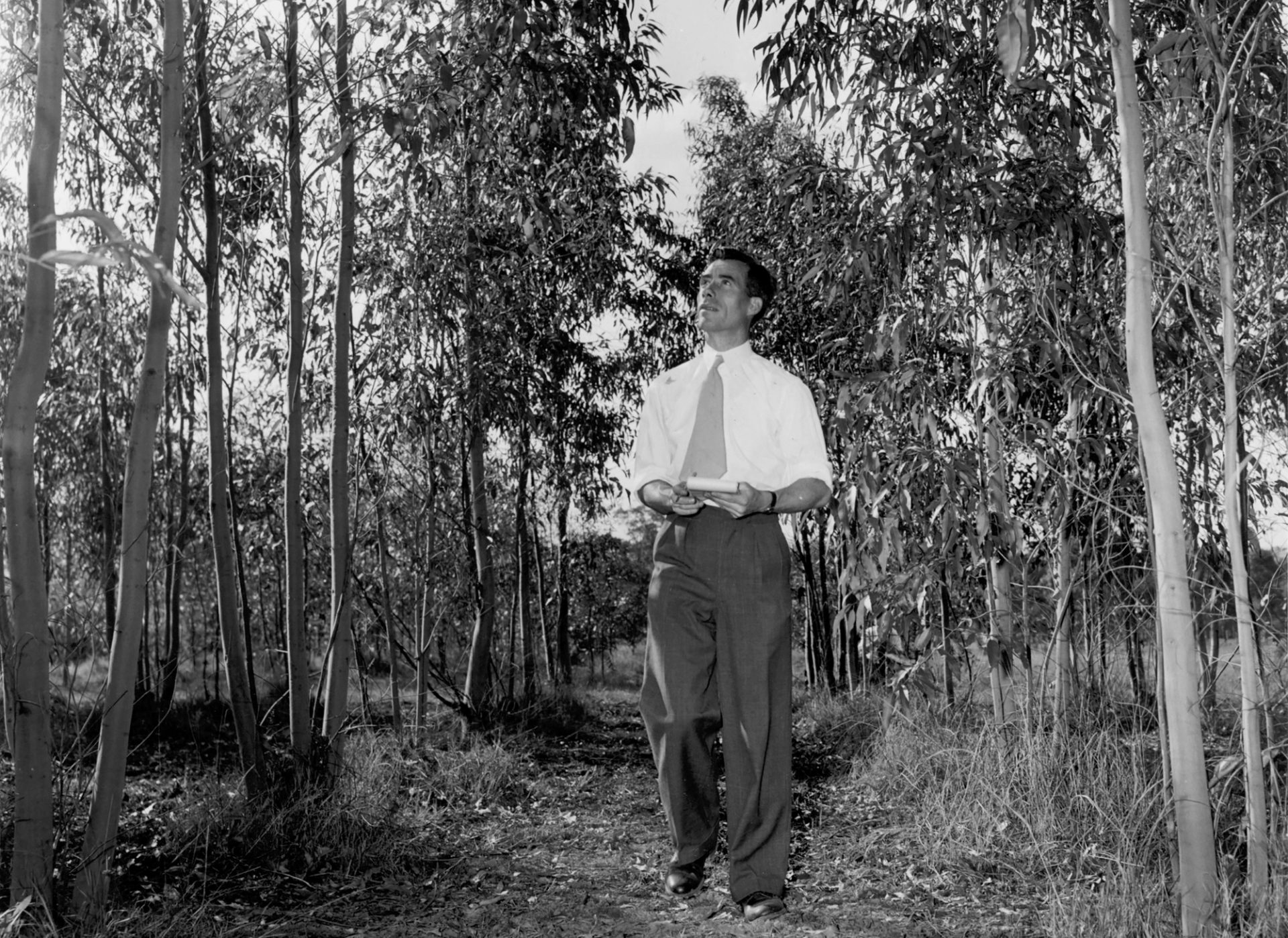The Last Stand

In 2021, Powerhouse commissioned artist Amanda Williams to document the last days of the museum’s former Castle Hill Experimental Research Plantation.
With 327 trees marked for removal ahead of the construction of Building J — a new storehouse for the Powerhouse Collection developed at Powerhouse Castle Hill (part of the Museums Discovery Centre) — the commission was conceived as both an archival recording of the site and heritage interpretation. A significant outcome is a series of artworks collectively titled The Last Stand 2021–23, comprising 32 works that demonstrate Williams’ diverse approaches to image making across eight conceptual engagements with the former plantation site. The Last Stand will be on display at Building J from its opening on 23 March 2024. An earlier selection of 23 works from The Last Stand series featured in the publication Eucalyptusdom (Powerhouse Publishing, 2022). In the culmination of a 3 year engagement at Powerhouse Castle Hill during the $44 million expansion project, Williams trained her sights on the final construction stages capturing the architecture and typology of Building J.
Williams’ research-driven practice focuses on analogue photographic techniques and the interconnections between the history of photography and natural environments. She has an interest in the potential of the photograph as a material object, with particular attention paid to fieldwork and the hand printing of images in the darkroom using alchemical processes – light, time, chemistry, film and paper substrate. What we see in her photographs is something unfixed: a vision moving, experimental and transforming.
From 1948 to 1979, the former plantation was the subject of phytochemical research involving the extraction of essential oils as part of the museum’s outreach into economic botany across New South Wales. Gridded rows of planted eucalyptus and melaleuca were farmed for commercial insights. Williams, who grew up in the neighbouring north-western suburbs of Sydney recognised in the plantation, not natural bushland but a living archive frozen in time.
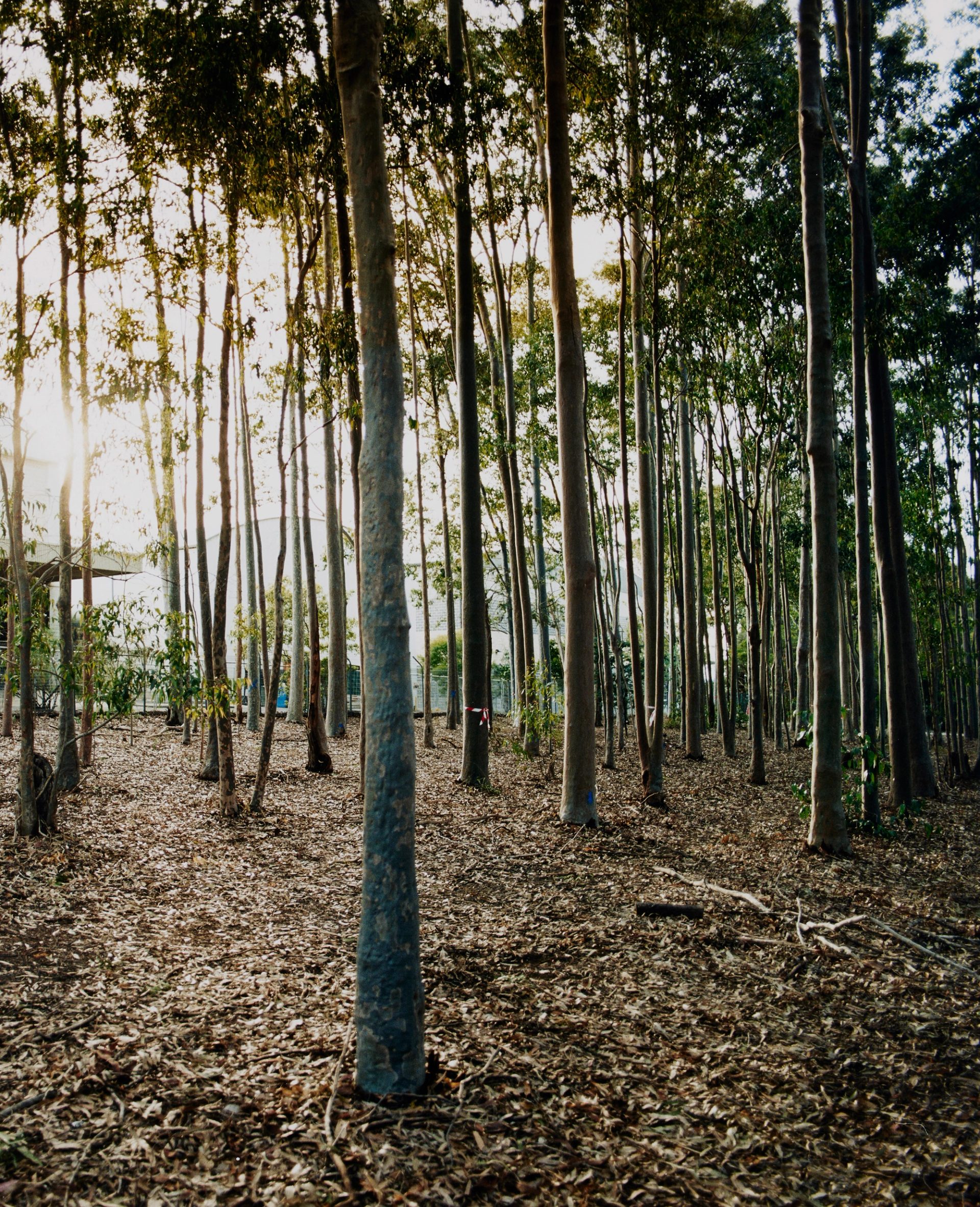

‘The Last Stand carries something of a lament, the recording of a transition from the plantation’s presence to absence, in the process revealing “the shadow of a ghost, the inverse of existence”.’
Such a description is close to early discussions surrounding the discovery of photography and scientific experimentation that followed. Early photography was defined by attempts to fix the image, the ability to capture a likeness and hold it in suspended animation. Williams found inspiration in the early British experiments of William Henry Fox Talbot, whose early calotypes led to the negative/positive process which defined mechanical reproduction, a key component of the photographic medium. While the negative is rarely considered an important object in its own right, existing only to be printed in another form, Williams asks us to look at it — and the plantation site — in a new light:

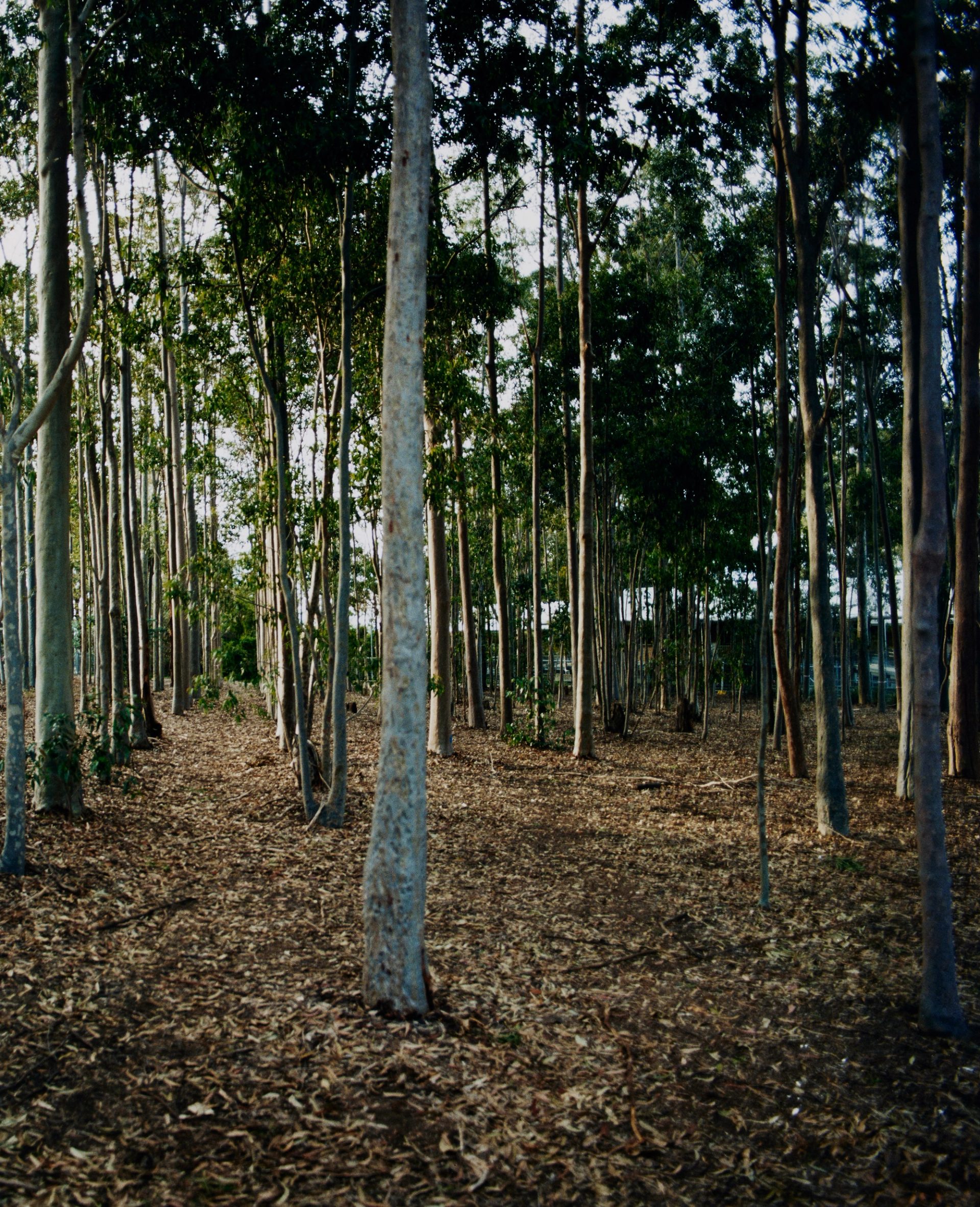
‘In essence, the negative offers productivity. It offers the opportunity for birth and rebirth and multiplicity much like a seed.’
Centring this body of work is the artist’s own form. Except when using historical cameras from the Powerhouse Collection, ‘I rarely use a tripod in my work’, Williams says. ‘My body becomes the tripod in that sense. I stabilise myself by holding the camera close to my body. I hold my breath, especially in low light, to still the camera while the aperture opens and closes.’ Bringing her body into the work, the commission becomes less a pure form of heritage documentation, and more a subjective reflection on the value of being present, witnessing and recording moments of change.
In photographing the former plantation, Williams employed a range of her own cameras as well as collaborating with the museum’s curatorial, collections and conservation teams to activate significant cameras from the Powerhouse Collection.
With the two series Avenues (stereoscope) and Chemigram Castle Hill experimental plantation (version 2), representational and abstract traces of the site were recorded on Kodak Portra 800, a colour 120-roll film for medium-format cameras. In Avenues (stereoscope), Williams used a Pentax 67 camera to capture elegiac rows of eucalypts. The result is a series of chromogenic colour hand prints made in the darkroom. Williams created these four photographs by cutting into three negatives, originally shot in landscape aspect ratio, to enlarge and print the final series in portrait aspect. This technique of slicing into the original negative, to create a new stereo sequence, echoes the function of the 1860s Murray & Heath stereo camera from the Powerhouse Collection (Object No. H7863) that is visible in one of the photographs in the series. The key here was to accentuate not only the height of the trees but the depth in their vertical absences, offering a three-dimensional view that alludes to the human eye and man-made planting of these perfectly symmetrical avenues of trees for scientific study.
The use of the stereo camera also sits in conversation with the accompanying series Max Dupain Linhof Technika. For this, Williams employed a camera from the Powerhouse Collection once owned by Max Dupain (Object No. 2011/59/1-1).
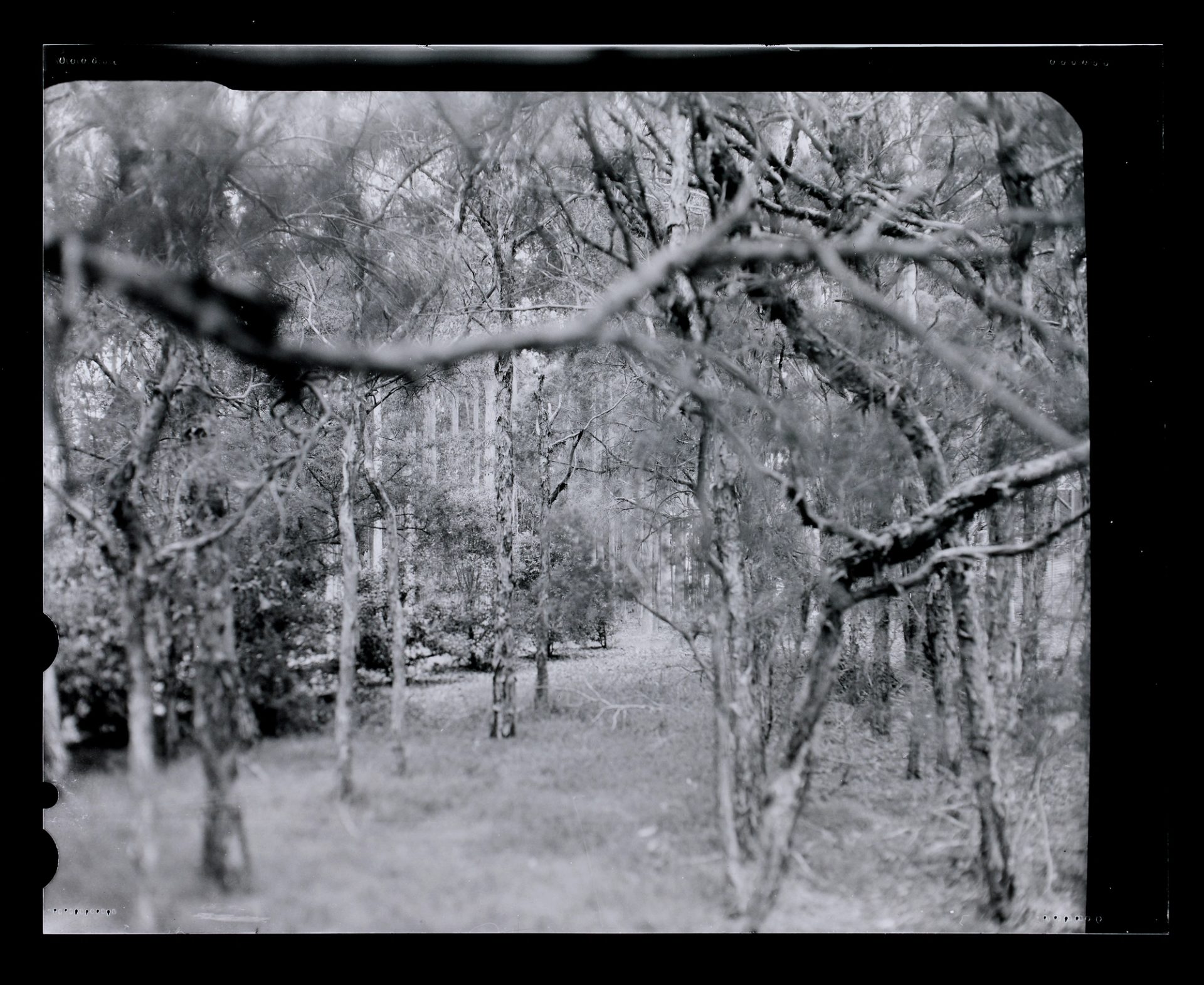

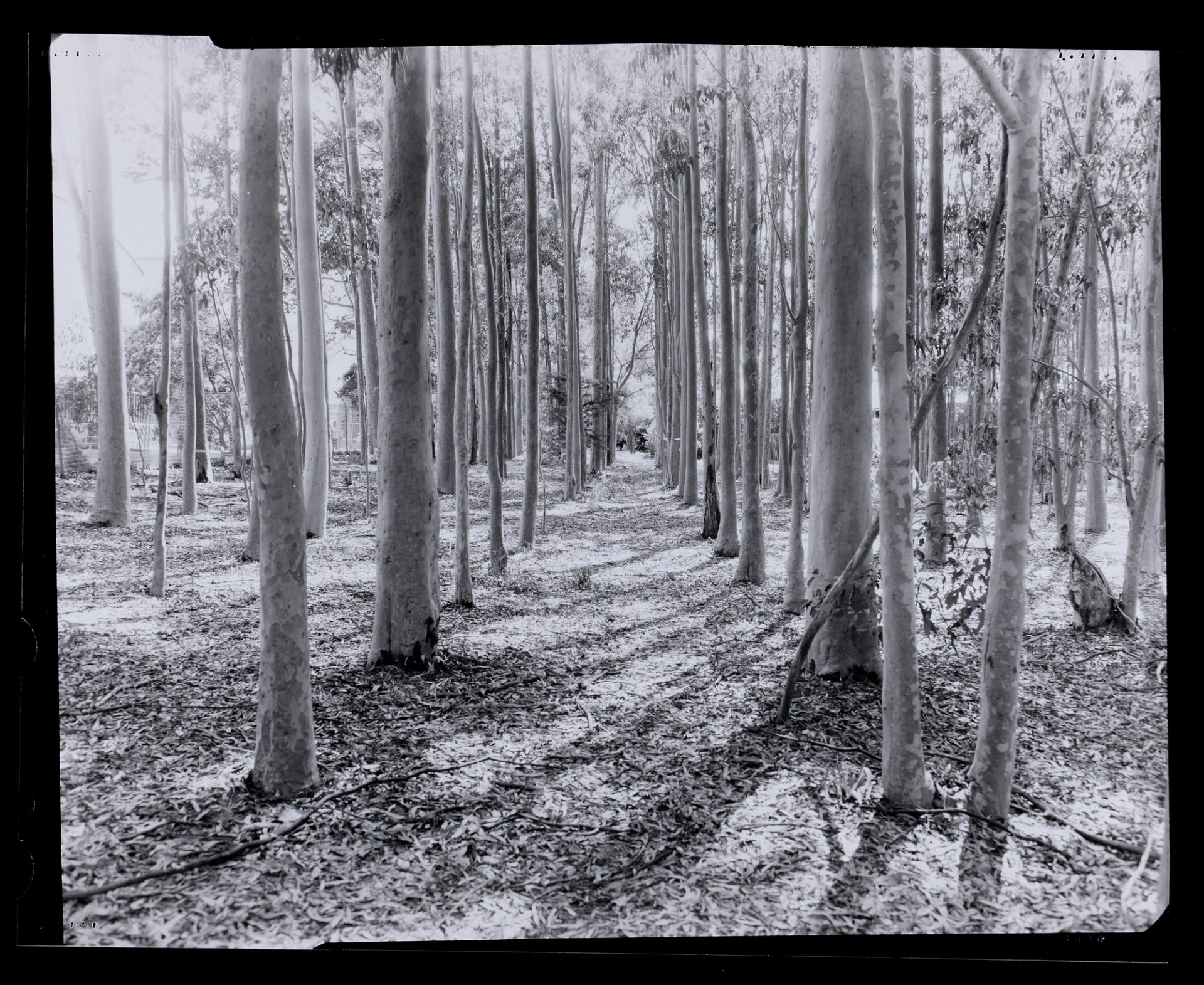

‘The very physical process of waking this camera up from cold storage, learning to work with it, viewing the plantation on the ground glass where the image appears upside down and back-to-front (due to the inversion of light as it passes through the lens), led me to consider just how constructed and coded our views of the world are. Using Dupain’s camera also raised interesting questions around the renewal of objects within the collection and the broader idea of archives and collections as active repositories capable of generating new meaning and forms.’
In Chemigram Castle Hill experimental plantation (version 2), a series of four abstract chromogenic photographs, the negative was created when the roll of film was brought into direct contact with the plantation’s leaf litter and dirt for 24 hours. The film was stored for 18 months in the dark to allow for further chemical change, then re-exposed and enlarged in the darkroom. The resulting photographs trace the film’s subterranean journey through the site. ‘There is a continuity between the representational photographic form of the plantation and the abstract trace in this series’, Williams says. ‘It is only the physical-mechanical process of creating the exposure that has shifted. Whether I am holding a camera, or burying the film to allow for physical contact between the recording material and the subject matter, there is still a visualisation taking place. An archiving of a specific moment in time has occurred — with the camera, with the soil, the atmosphere and the local ecology. I like the idea that this particular site created that image, a form of automatic imaging — my presence there was as witness and facilitator.’
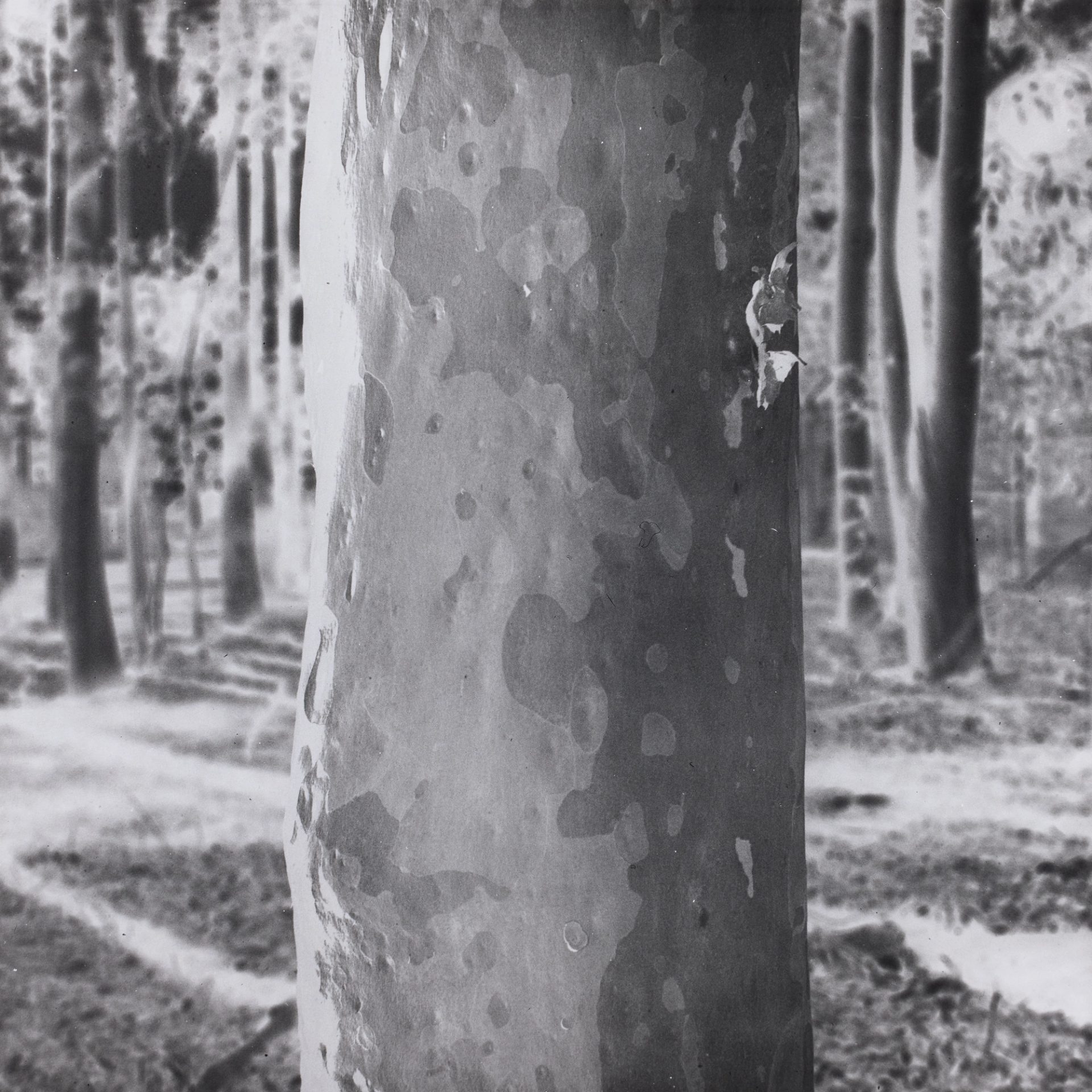
In Tree portrait (Corymbia citriodora), Williams brings the bark of a lemon-scented gum into intimate focus so that it appears like skin. One of a series of works that appeared in the Powerhouse publication Eucalyptusdom (2022), the portrait offers a connection to the tree that is tactile, encouraging the viewer to become self-aware, foregrounding the act of ‘looking’. To accomplish this, Williams made a copy of the negative in the darkroom before printing on silver gelatin paper at human scale, creating an illusory effect where the negative and the positive image appear to merge as one.

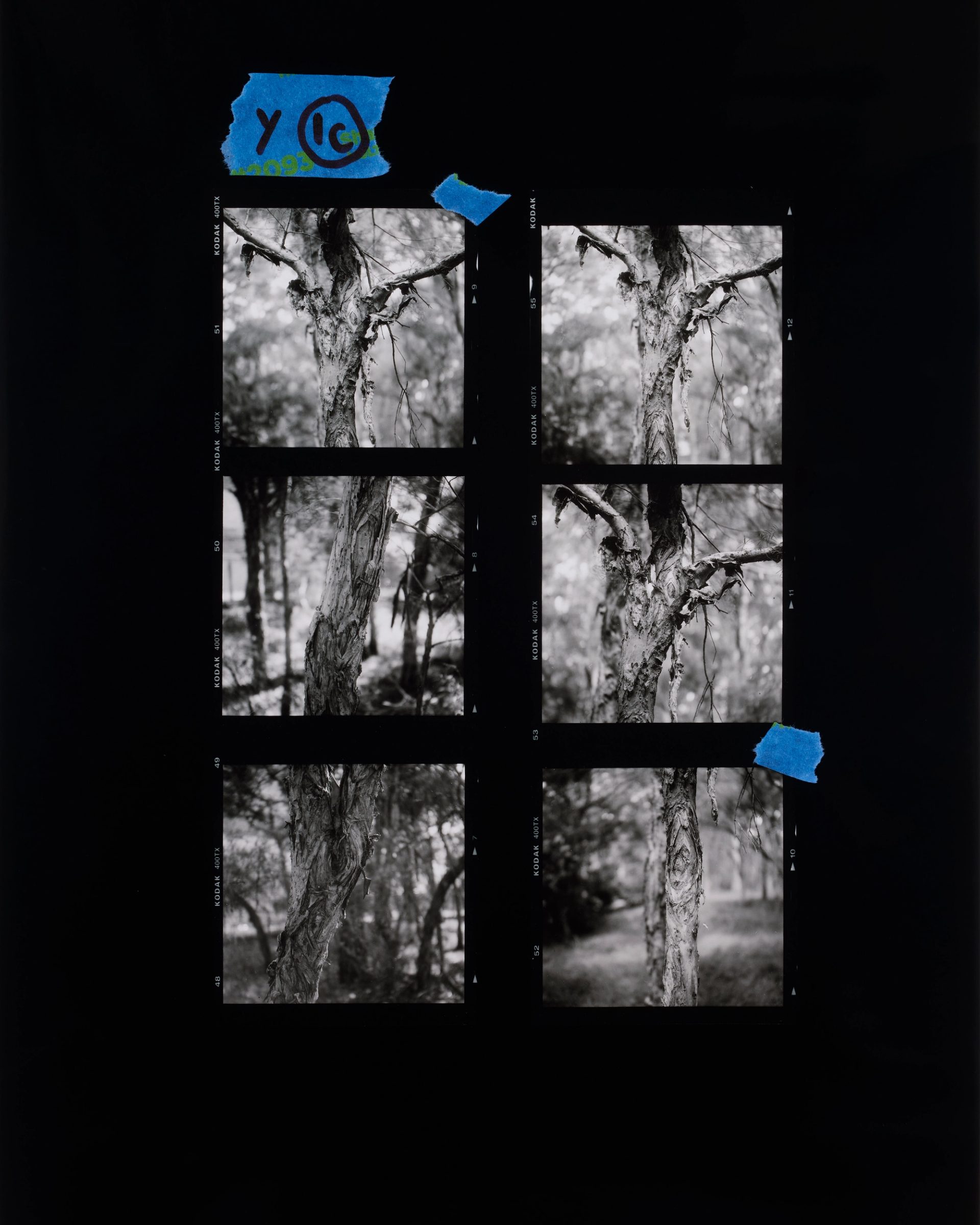
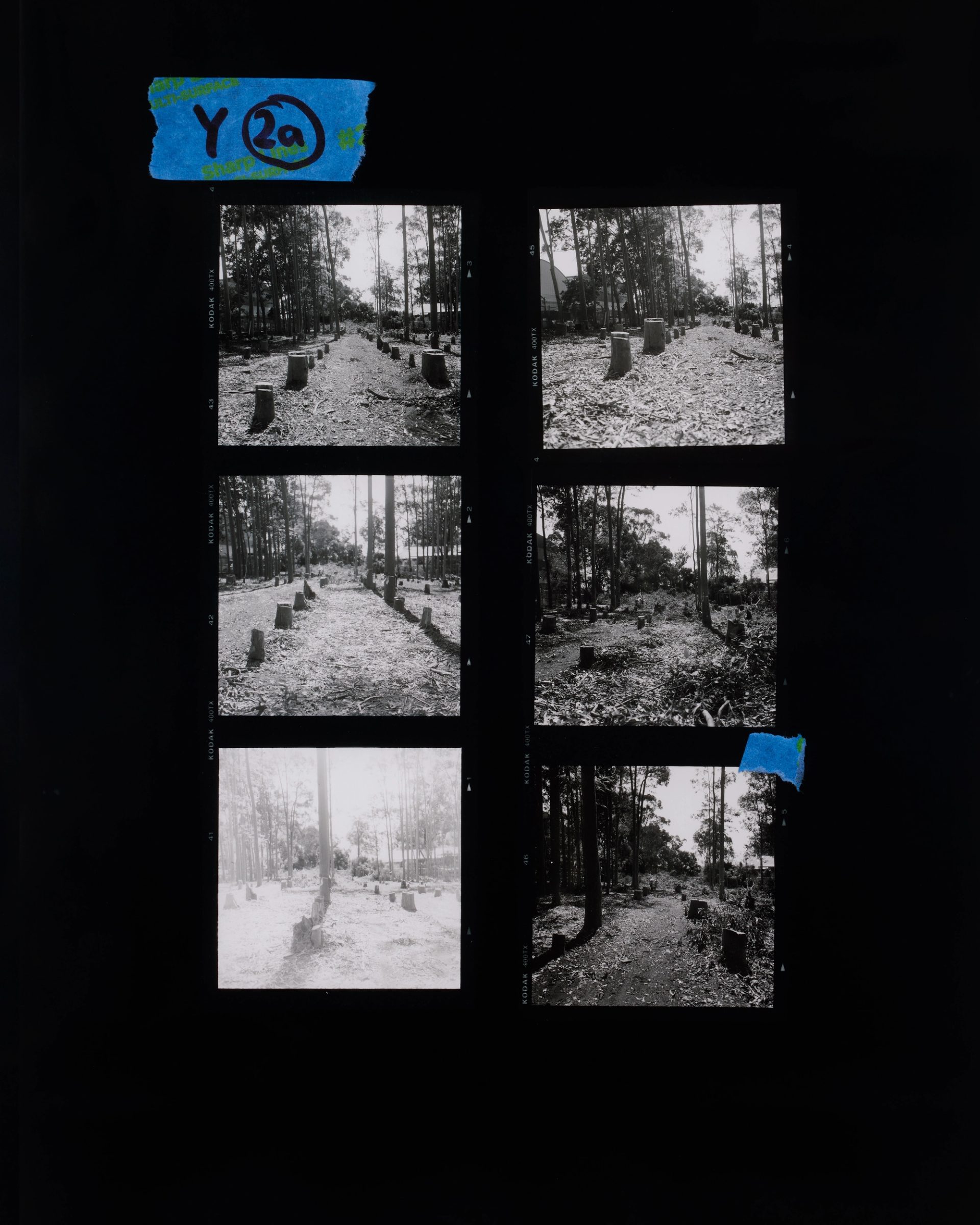
As with the film negative, a proof sheet is a photographic tool that is rarely shown or considered an artwork in itself. Traditionally it offered the photographer a positive print of all the negative images from a roll of film. In Proof sheet enlargement (melaleuca, eucalyptus and post-removal), Williams reproduced the proof sheets she originally marked-up when editing and sequencing the photographs for inclusion in the Eucalyptusdom publication. The resulting series of three large-scale proof sheets display the physical marks made during the editing process, torn scraps of masking tape identifying selected frames. The work was digitally enlarged and printed using a commercial LightJet printer, a technology that straddles analogue and digital processes and like the medium of film is near obsolete. The movement between states, from analogue to digital, echoes the transformation of the site captured in the images.
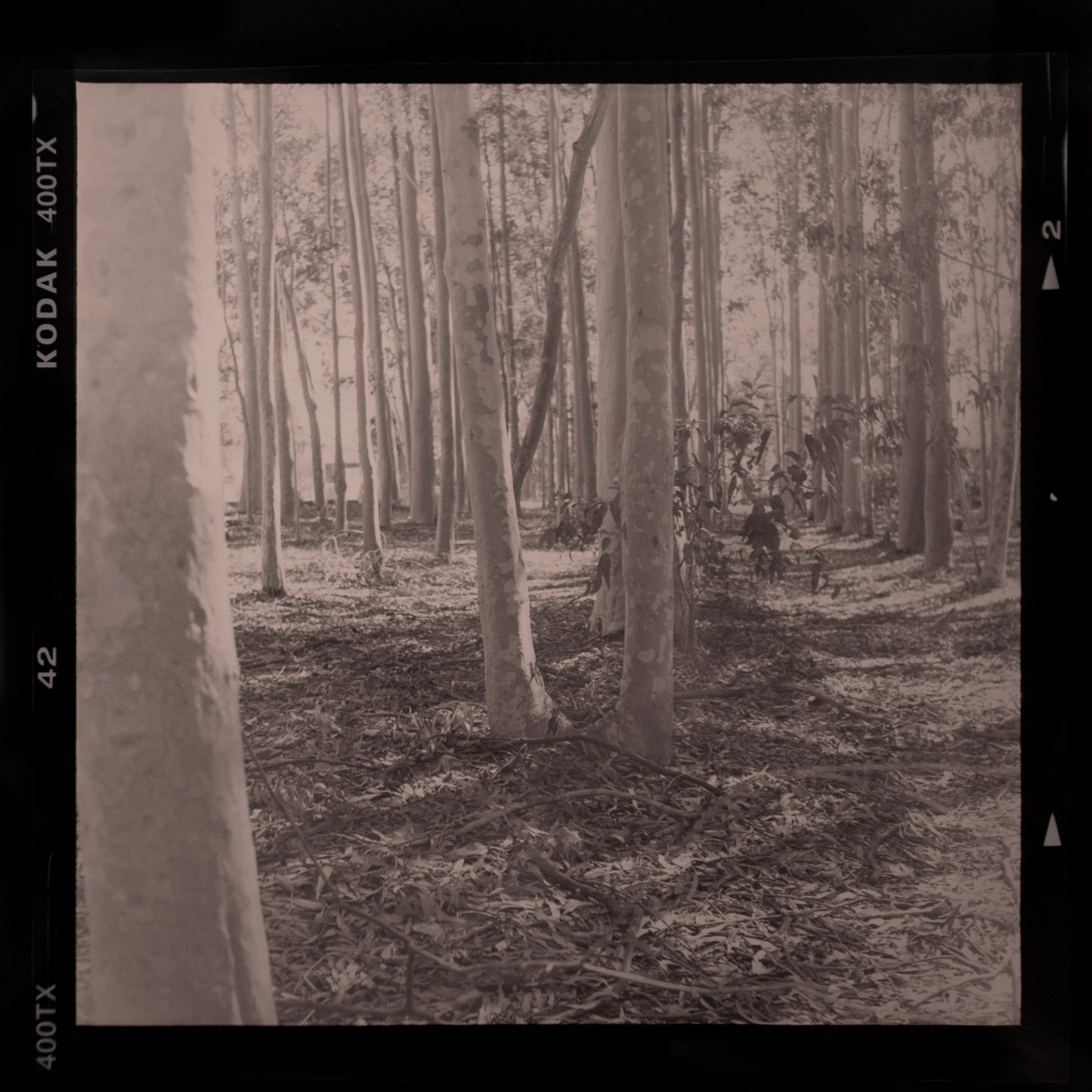
With Williams’ photography, meaning is generated as much through the making as through the image itself. In A walk (exposure 1–12), the two become inseparable. Using her Yashica-Mat twin-lens medium-format camera (marketed as a ‘ladies camera’ in the 1950s), Williams exposed a single roll of 120 film, recording her steps walking through the plantation. The images were then printed on silver gelatin paper, though they were left unfixed, working against well-established conventions of darkroom printing. This means they will change unpredictably when shown over time. ‘This work is, in essence, durational — not just in the way the image is changing over time. It also documents a performative moment: me walking and taking these photographs’, Williams says. ‘A key aspect of this work is my interest in what the photographic image could be seen to do, how it performs, what it represents over time. I like to think of the photograph as an event in itself, something active. A walk documents this across 12 frames on the roll of film.’
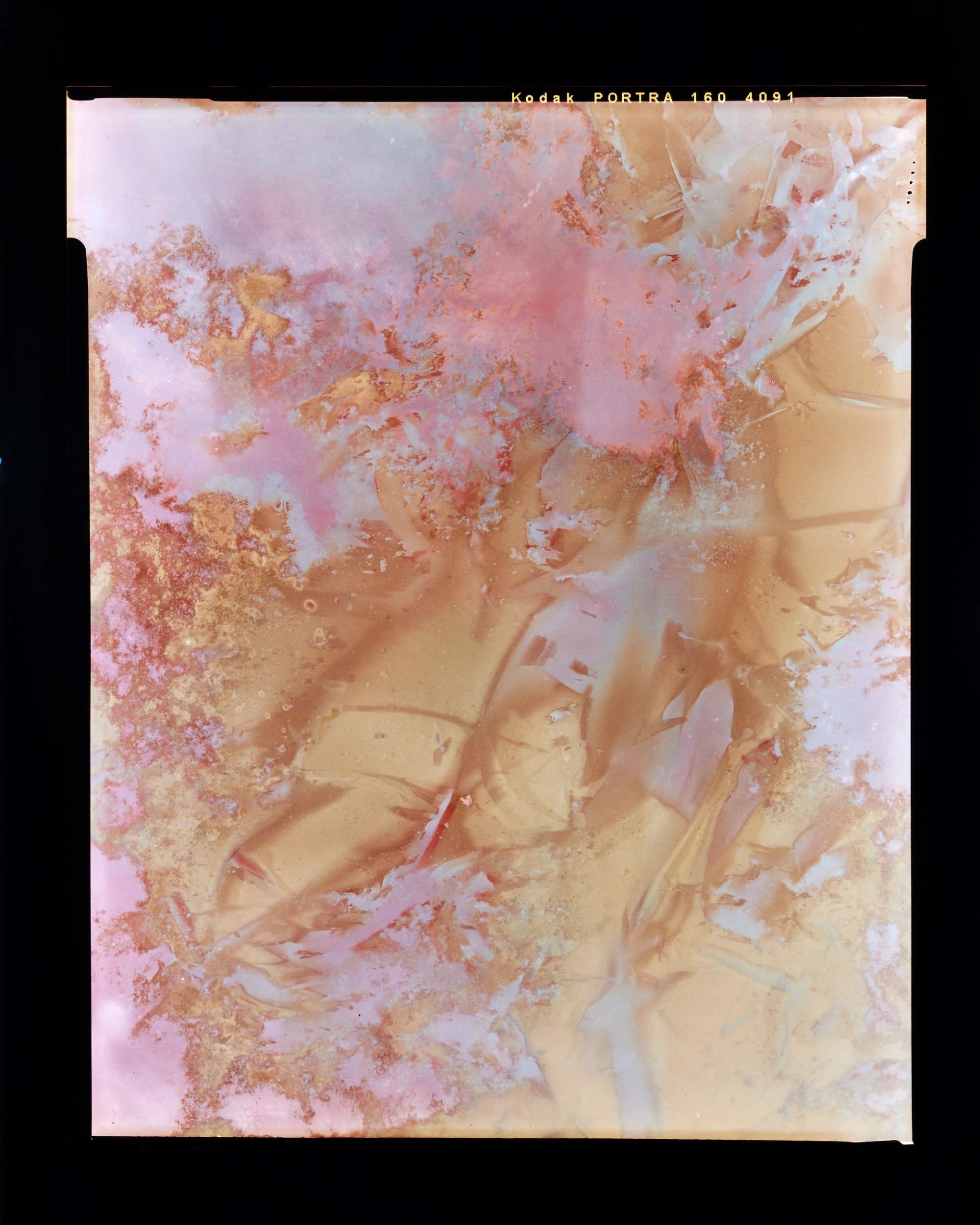
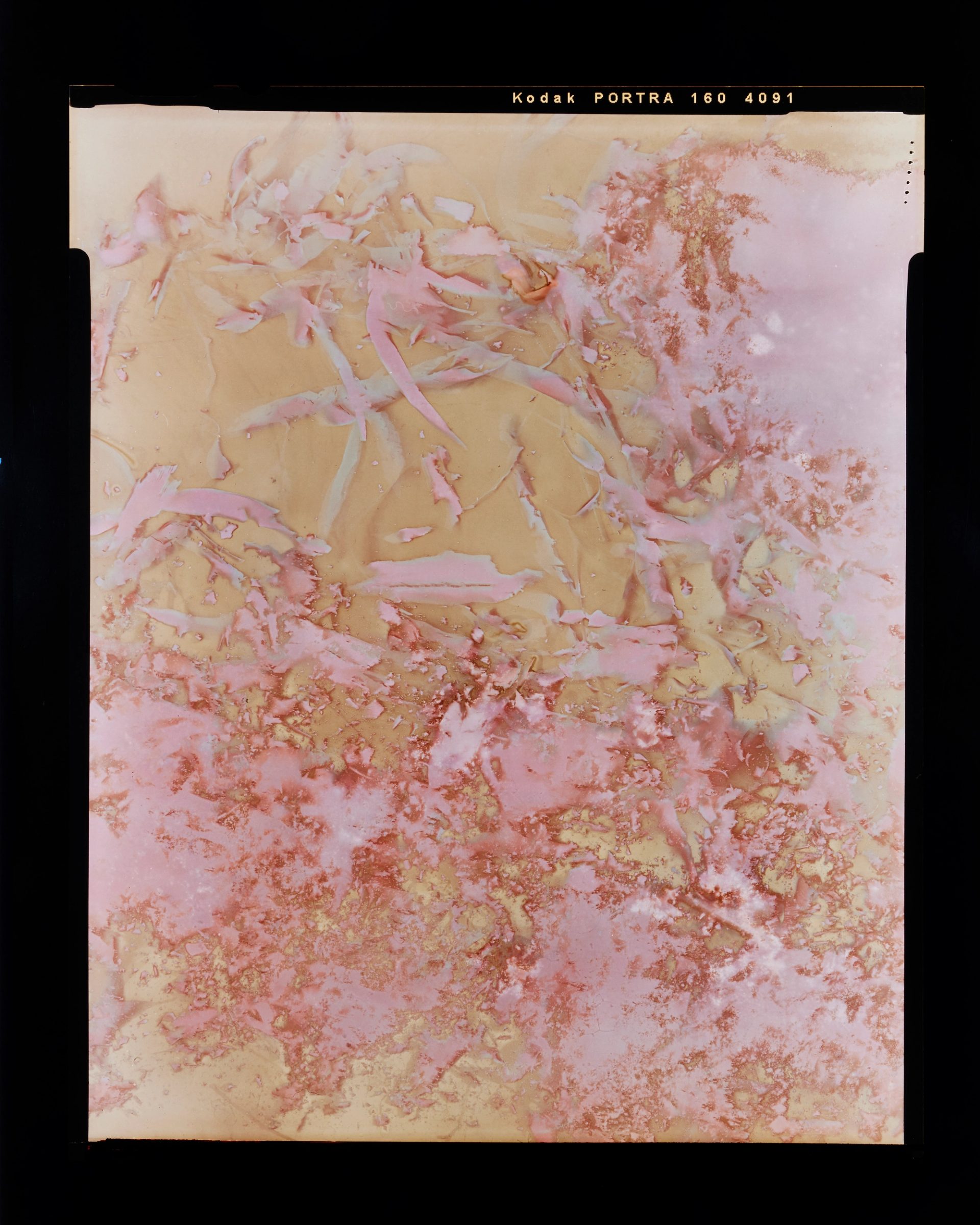
In its performativity, A walk also speaks to the accompanying Lumen print Castle Hill experimental plantation series, which used a cameraless process to create images of the surrounding atmosphere and ecology via light-sensitive paper being placed just below the leaf litter and soil of the site. Two resulting unfixed, smudgy pink-purple lumen prints were photographed with a large-format camera on Kodak Portra 4x5 film, developed and optically enlarged to permanently capture their impermanent state. The original lumen prints will continue to change over time. The Kodak Portra copies offer an ostensibly fixed record.
With each step, Williams asks us to question how a photograph is made and how its meaning is formed and has potential to change — through space and over time. ‘A significant aspect of my practice and research is questioning the techniques for darkroom printing that have been prescribed and passed down’, Williams says. ‘Ansel Adams wrote a three-volume manual: The Camera, The Negative and The Print. These volumes provide a series of rules and techniques for the accurate reproduction of the world around us. I push up against this idea of fixed processes and representations. I’m open to chance, following a process through to completion despite so-called incorrect developing or processing, and I’m excited by it. It allows for and leads to unexpected and unique outcomes.’
And with each image, Williams rubs up against our desire for photography — like nature — to be immortal, to last forever. The world a photograph lives in and reflects is unstable and transforming. Which is why Williams sees herself in cinematic as much as photographic terms, as the creator of ‘moving’ images that trace a world in quiet but constant flux.
The artist quotes in this text are drawn from an interview conducted with Powerhouse senior editor Michael Fitzgerald and artistic associate Agatha Gothe-Snape at Powerhouse Ultimo on 6 December 2023.
About
Amanda Williams is a visual artist living and working on Gadigal Country, Sydney, who works with the medium of photography to examine its historical legacy, material underpinnings and contemporary significance. Williams’ work is held in several national collections including the Museum of Contemporary Art Australia, Sydney and the Murray Art Museum Albury, NSW. Her work has been exhibited across Australia and the UK, including in: The National 4, Museum of Contemporary Art Australia (2023); Return to nature, Monash Gallery of Art, Melbourne (2022); The Truth, PHOTO 2021 International Festival of Photography, Melbourne (2021); Whose Land Is It?, Open Eye Gallery, Liverpool, UK (2021); and Archie Plus, Art Gallery of NSW, Sydney (2020). In 2018, Williams was awarded the National Photography Prize, Murray Art Museum Albury.
Commissioning statement
We needed to find a way to mark the removal of the trees, to make a wake for them. Also, to allow what was a living archive to transform into another type of archive that could hold the complexity of the lifeworld of the former plantation.
Amanda Williams’ photography practice is a form of meditative documentation. She diligently creates a record of a time and a place through photographic means and builds a complete archive of views, details, perspectives. But each photograph is always imbued with the less tangible imprint of her own body, her biography, her eye’s empathetic gaze. Williams knows moments of light are precariously balanced at the threshold of loss.
There is no claim to the neutral record here. The experimental eucalypt and melaleuca stands at Castle Hill meant different things to different beings — significant cultural heritage, an exhausted residue of important scientific inquiry, a living archive of the Powerhouse Museum, a vital home, a dappled shadow, an unbroken backdrop to the rigour and repetition of the daily work of caring for the Powerhouse Collection.
This commission, and its accompanying archive, document a place as it transforms to make way for another place through the eyes of just one of the many witnesses who were invested in this moment of change. And so, this commission became a way for the trees to alchemically transform so that they can persist.
Agatha Gothe-Snape
Powerhouse Artistic Associate

















